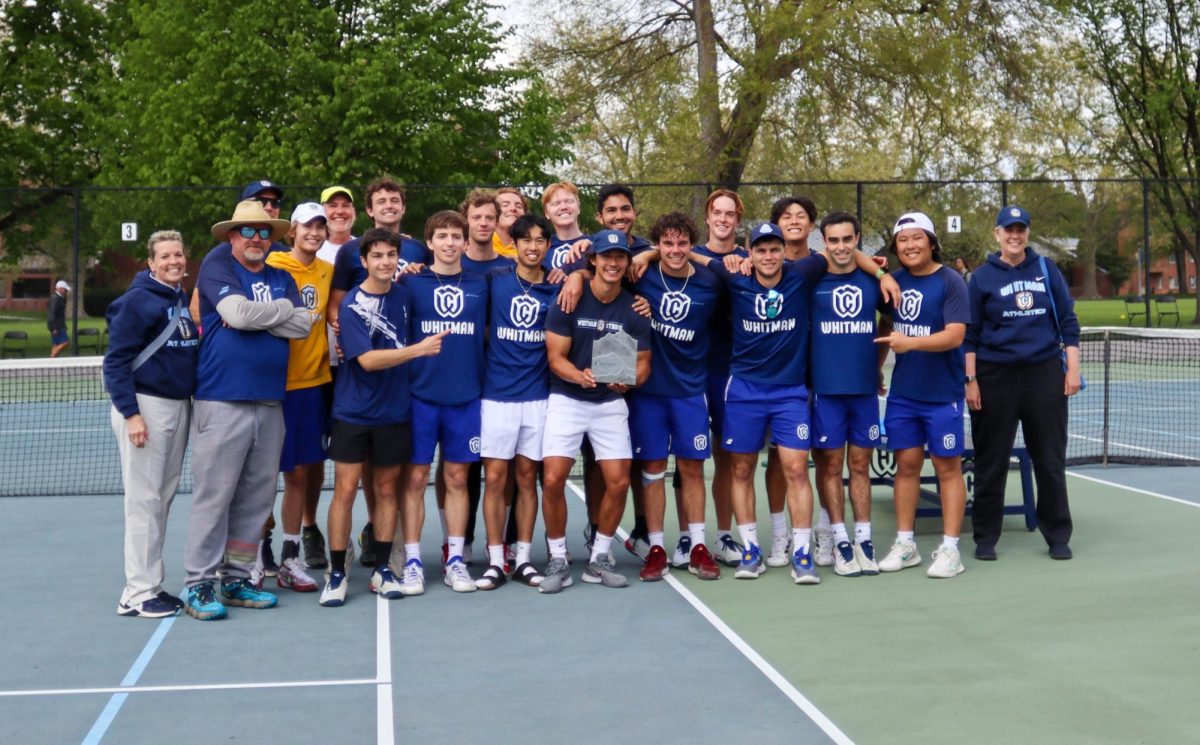
It all started in Norway about 7,000 years ago.
What Assistant OP Director Salmon Norgaard-Stroich calls a “granola,” “hippie” and “retro” sport has been around long before the cavemen were replaced by sophisticated counterparts. This little piece of history: telemark skiing: was celebrated at Bluewood Mountain last weekend.
Originally called “free heel skiing,” telemark skiing was at one point the only way to ski. In the mid-1800’s, skiing pioneer Sondre Norheim, a resident of Telemark, Norway, invented the “telemark turn.” In the Winter Olympics, skiers are required to land in the Telemark position. The “Carrying of the Torch” still begins in Norheim’s hometown.
In some ways telemark skiing bridges the gap between alpine skiing and Nordic skiing. While equipment is similar to alpine equipment, telemark is more backcountry-oriented, like Nordic skiing. Aside from equipment, the main difference between Nordic and telemarking is the form of riding. Telemarkers use the telemark turn, where Nordic skiers use skating and diagonal strides.

When asked what the festival is all about, Norgaard-Stroich said, “it’s really about celebrating the Telemark skiing community and culture because we are really different in what kind of skiing we like to do. We love to ski at resorts, go in terrain parks and do jumps, but we also really love to go skiing in the wilderness and in the backcountry. […] That definitely makes it a different kind of crowd than at the resort. Because we are relatively few in numbers, it’s nice to have an event where people come together in the same place and celebrate that culture.”
The Bluewood Telemark Festival offers students, staff and community members, including some Tri-Cities residents, the opportunity to enjoy a day embodying the telemark skiing culture. Clinics were offered for intermediate and advanced individuals as well as beginners who had never set foot on skies. With the purchase of a lift ticket, all other events were free.
After clinics, individuals had the option to participate in the uphill-downhill race. The origination of this race comes from the birkebeiner army unit in 1205 during a Norwegian civil war. Two of the strongest skiers in the unit carried the two-year old Prince uphill over miles of mountains in treacherous weather to safety.
Up at Bluewood, the uphill-downhill race is certainly not a matter of life and death, but it does provide a good opportunity for the more advanced telemarkers to compete in a challenging race on a non-groomed run. Two years ago, faculty won this race. Norgaard-Stroich hopes to bring back this glory in future years.
Following the uphill-downhill was the silly slalom, a race where participants show off their outrageous costumes, which mainly consisted of an abundance of multi-colored, retro 80’s clothing. The silly slalom consisted of different stations where participants would tell a joke, act as a vegetable, pole dance, or limbo.
“Definitely what separates telemarketers from other skiers is that we tend to play around with the goofiness and be different. Almost every telemark festival has a costume contest and there’s always tons of hilarity involved in the event. We try to do that with our events,” said Norgaard-Stroich.
The final events of the day were the raffle followed by the downhill race. The downhill race, according to Norgaard-Stroich, provided a good opportunity for the advanced skiers to really show their skills. First place winners were given a little extra incentive — three raffle tickets.
The raffle items consisted of coffee coupons, water bottles and t-shirts. The grand prize was a Black Diamond Aqualung.
“[The Black Diamond Aqualung] is a fancy piece of equipment for backcountry […] so if you get caught in an avalanche you can breathe through snowpack,” said Norgaard-Stroich.
Despite a smaller turnout than in past years, Norgaard-Stroich remained optimistic amid the sunny weather and exciting atmosphere. This is the second telemark festival he has organized. Norgaard-Stroich’s ultimate goal is to help facilitate the growing popularity of the telemark skiing culture within the snow sports community.
According to Norgaard-Stroich, the majority of participants this year were Whitman students. Next year, the Whitman Outdoor Program plans to make the event a college invitational in hopes that participants from nearby Spokane, Moscow and the Gorge will join the festivities.



